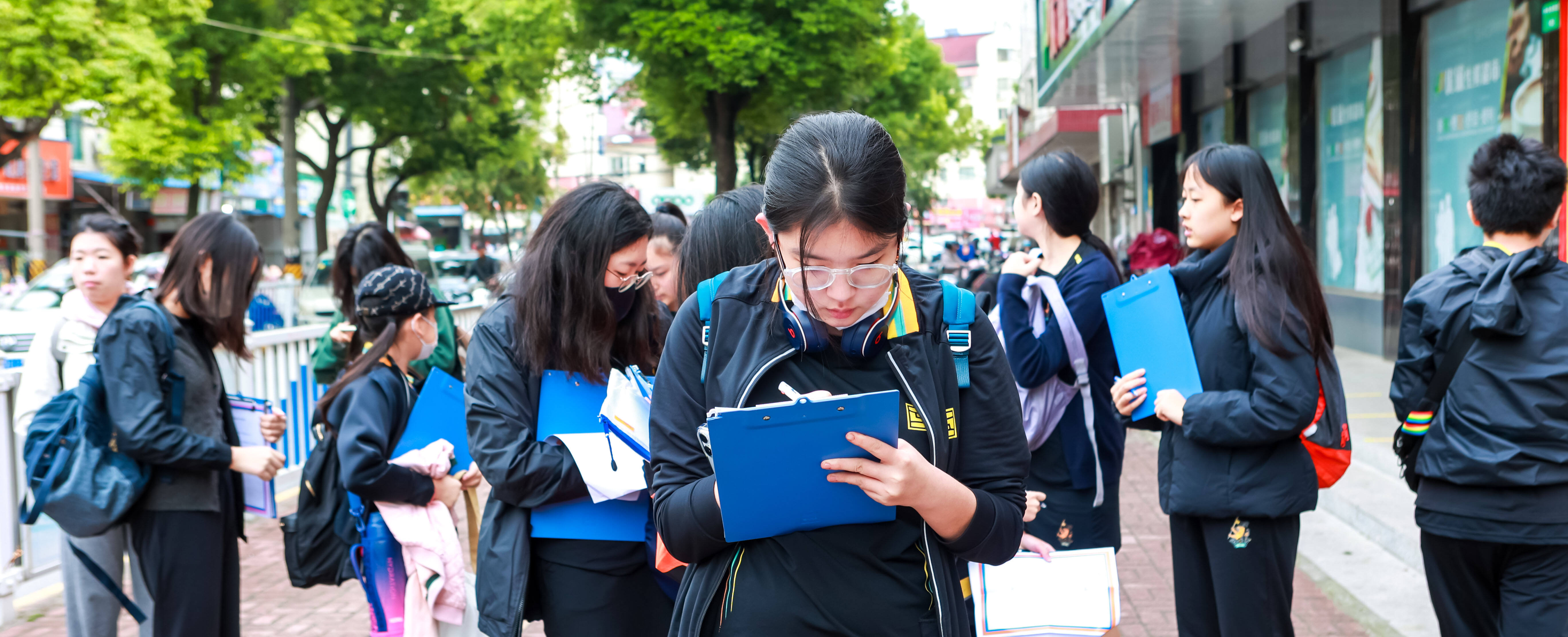
“Kai Wu Cheng Wu”, originating from Chinese classic Zhou Yi, refers to the principle of understanding thoroughly
the truth of all things on Earth and acting accordingly. Kai, which means development and innovation, is the essence
of the Huili social studies curriculum.
Focusing on realising pupils’ full potential and establishing a belief in social values, the curriculum is designed to
cultivate different abilities, while encouraging them to show concern for their community and actively work to make it
a better place. Finally, pupils are encouraged to understand and practise the core values of Chinese modern society.
As parents of a new era, we not only expect our children to develop with the times in a constantly changing
international environment, we also want them to value and preserve Chinese traditions.
So, how does the Huili social studies curriculum allow pupils to achieve these goals?
Solid Learning Foundation
Huili social studies, modelled on the national compulsory educational curriculum and combined with teaching resources
of western humanities and social disciplines, covers a range of elements of geography, history and society to teach
the relationship between humans and nature, between humanity and its surrounding environment. Pupils will acquire a
solid learning foundation by participating in activities including debates, project discussions, field investigations
and presentations and the subsequent analysis of social phenomena.
Take the example of the subject of geographical landscapes. The teacher will introduce the subject through the
topic of tourist attractions, guiding pupils to draw an outline of attractions where they had been. Pupils will first
make a comparison of different scenic spots and classify them. Then, they will discuss principles of classification
and the reasons why landscapes form in this way. The teacher will make comments on their observations and establish
key elements and common themes to make sure they have a sufficient grasp of related concepts and knowledge.
The social studies curriculum adopts a teaching pattern compatible with international exams. Pupils will start from
the basic courses before moving on to the deeper content and immersive learning around the test requirements of
international exams. This kind of teaching pattern is conducive to developing pupils’ critical thinking abilities as
well as their skills of comparison, judgement and evaluation. Most importantly, we carefully design the exercises
according to the requirements and standards of the IGCSE and IB programmes, with the aim of helping pupils to achieve
success in these courses later on in their academic career.
Cultivation of Critical Thinking and Application Ability
In the globalised and information-based modern world, pupils have easy access to data, but they are also confronted
with the ongoing challenge of assessing the authenticity, relevance and potential bias of the information sources they
encounter online and elsewhere. The mission of this part of the curriculum is to teach pupils how to think critically
and navigate sources of information effectively.
Social studies include geography, history and society courses taught by Chinese teachers and English courses by international teachers. Collaborative teaching of Chinese and foreign teachers can inspire pupils to discuss various topics from diverse perspectives, develop social values and train their ability to analyse and solve problems by utilising the information at their disposal.
Take the subject of international relations, for example. In one case study, pupils are tasked with the idea that they are the members of Red Cross and need to discuss plans on visiting and treating prisoners of war under complicated situations of international politics. In this activity, pupils should achieve a thorough understanding of the international relations involved, the structure of Red Cross and how to judge and utilise all available intelligence on the developing situation. This approach helps improve their critical thinking, as well as their ability to apply logic and express themselves in a convincing and articulate manner. Pupils do not only need know ‘what’ and ‘why’, they also need analyse facts, collect evidence and employ logic to guide them to the best solutions.
Multiple Assessment Methods
Huili places emphasis not only on assessing the learning processes and results of its teachers but also on learning
assessments for the pupils themselves. In the social studies curriculum, multiple assessment methods can be embodied
in the following two parts:
Assessment of diverse aspects: Although we focus on assessment of knowledge and skills, other aspects like pupils’
attitude, emotion, learning processes and methods are also of great importance and need to be assessed. We must
attentively observe whether pupils have built interest and sensitivity on this discipline, whether they have developed
good habits of learning, whether they are able to collaborate and communicate with peers and adults and whether they
can effectively propose, analyse and solve a question.
Multiplicity of assessment methods. We attach importance to the formative assessment which revolves around the process
of constant observation, recording and reflection on pupils’ learning. Assessment could include pupil’s presentations
which encourage individualised learning. For example, we would like to assess whether pupils carrying out project
presentation and debates are capable of effective discussion, comparison and extension of knowledge found in the
textbook. We also want to find out whether they can carry out independent inquiry-based learning in group activities
and whether they can evaluate their own learning achievements and successfully adjust to better learning methods.
Because our curriculum includes Chinese and English lessons, we will conduct assessments in both languages. Not only
does the curriculum lay a solid foundation for all English humanities taught in high school, it also prepares pupils
for language acquisition and exam readiness.
“To learn as much as possible while absorbing the essence of subject and abandoning outdated or flawed knowledge; To
combine knowledge with moral actions and practices accordingly.” (Chinese proverb) We expect Huili pupils possess a
deep sense of Chinese identity as well as a global awareness by learning the social studies curriculum to help them
become better communicators, creative problem-solvers and lifelong learners.